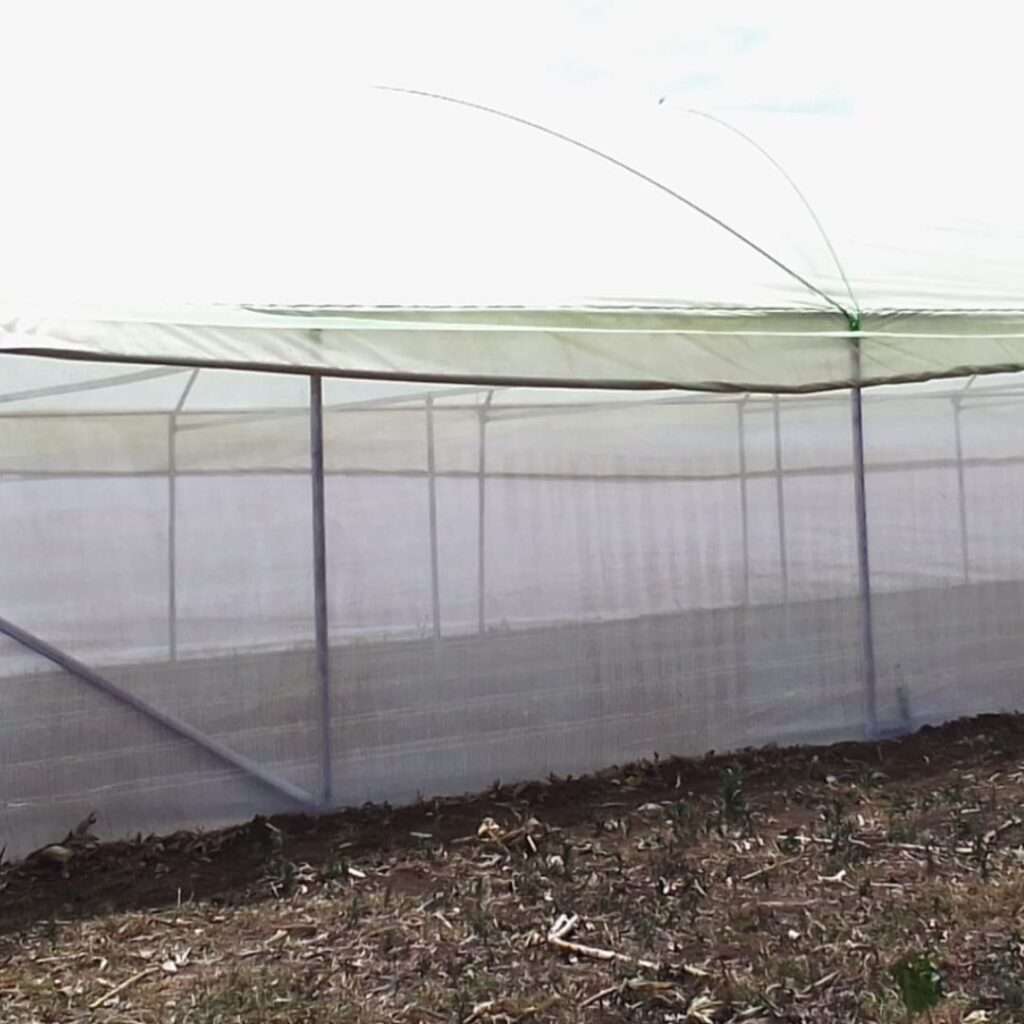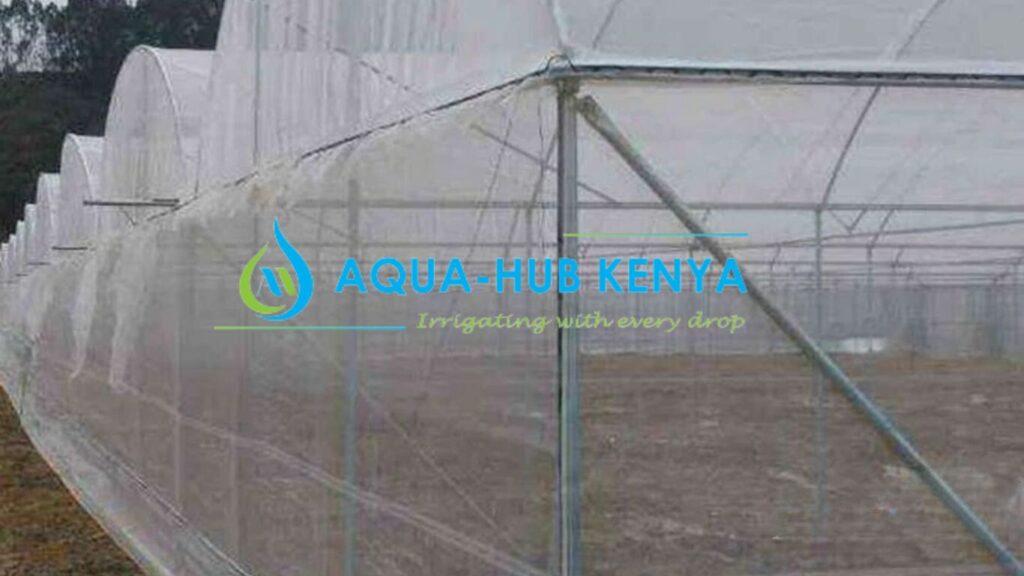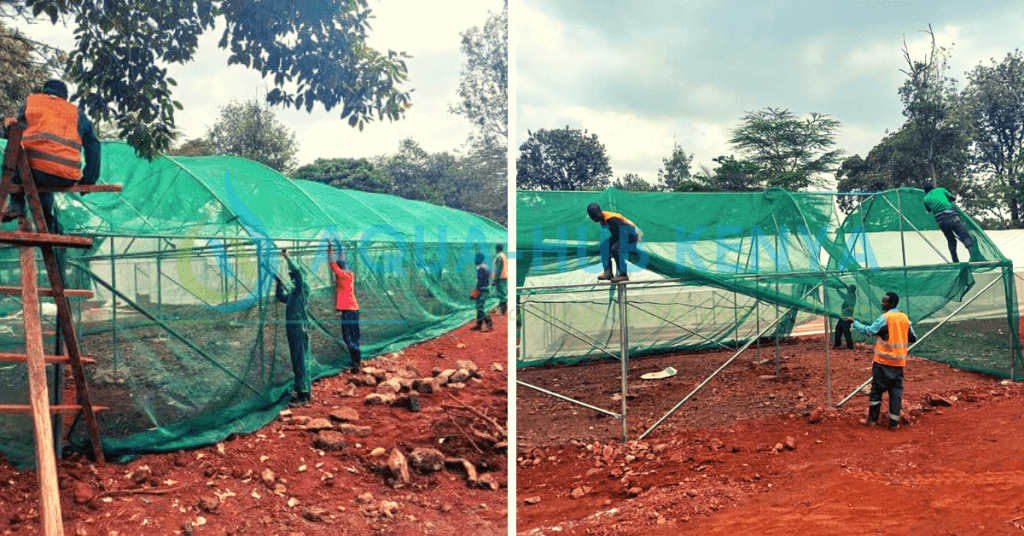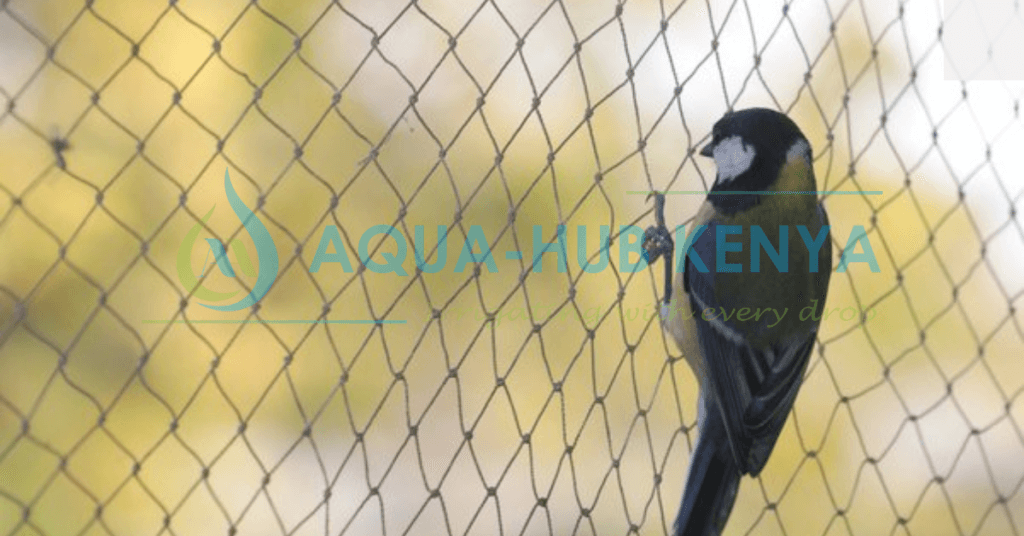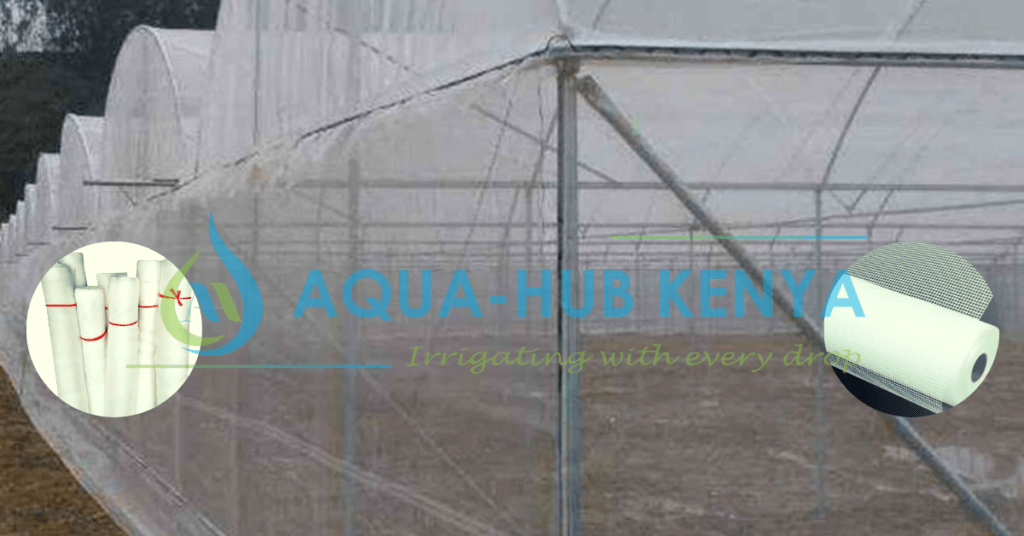Agricultural Nets in Kenya
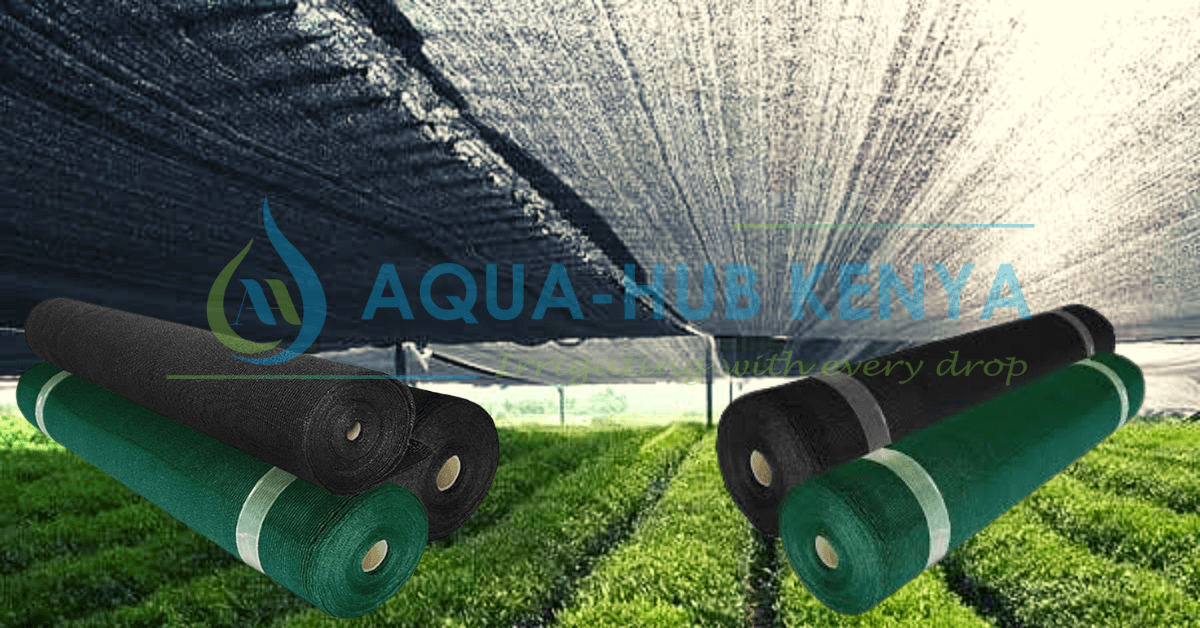
Aqua Hub Kenya is the best provider of Agricultural Nets in Kenya. We have a wide range of agricultural nets in the country. Our agricultural nets are of high quality and most affordable to farmers. Using agricultural nets is mostly referred to as netting. Netting is an environmentally acceptable and cost-effective method of safeguarding crops. It protects them from pests, birds and animals, harsh sun rays, and hailstones. Netting technology is a safe pest management approach that is gradually being recognized as a viable choice for small-scale farmers.
What are agricultural nets in Kenya?
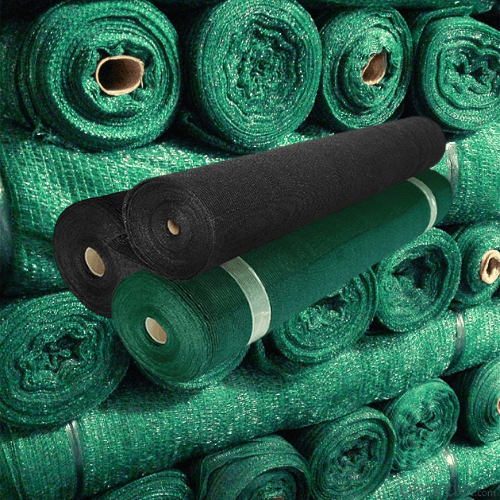
Agricultural nets in Kenya refer to a range of protective nets used by farmers to protect their crops from various environmental factors. The factors are high temperatures, strong winds, excessive sunlight, and pests. These nets can be used in different ways depending on the crop and the environmental conditions. These nets are widely used in Kenya by small scale and large scale farmers. They are becoming increasingly popular due to the benefits they provide for crops. And the potential for increased yields and profitability. The cost of these agricultural nets vary depending on several factors. Your selection of the agricultural net to use as a farmer will depend on what you want to do. Each type of net has its own use.
What are the types of agricultural nets in Kenya?
There are several types of agricultural nets that are used in Kenya, some of which include:
Shade nets
Shade nets are a type of agricultural net that are used to provide shade for crops. The crops are coffee, tea, and horticultural crops, which are sensitive to excessive sunlight. They can also be used to protect crops from high temperatures, strong winds, and heavy rain.
Shade nets typically come in different shade percentages, with lower percentages providing more sunlight and higher percentages providing more shade. The appropriate shade percentage will depend on the crop and the specific growing conditions. For example, shade nets with a higher percentage may be used for sensitive crops such as seedlings. While lower percentages may be used for more mature plants.
Shade nets are typically made from UV-stabilized polyethylene or polypropylene, which makes them durable. And resistant to UV light, wind and rain. They come in different sizes and can be used for various crops such as fruits, vegetables, flowers, and field crops.
The use of shade nets can have several benefits for crops, such as:
- Reducing temperature stress and evapotranspiration, which can improve crop yields and quality.
- Reducing the need for pesticides.
- Improving the color, taste and size of the fruits.
- Reducing the risk of sunburn and other heat-related damage to crops
- Reducing water loss from the soil.
However, it’s worth noting that shade nets can also have negative impacts if not managed properly. These include reducing the light level too much and causing the crop to be stunted. Or causing the crop to be too wet and promoting disease development. To mitigate those negative impacts, it’s recommended to consult with an agronomist or an expert before installing the shade nets. And to monitor the crop growth and environmental conditions regularly.
Insect nets
Insect nets are a type of agricultural net that are used to protect crops from pests such as aphids, thrips, and whiteflies. Ones that can cause damage to the crop and reduce yields. They can also be used to protect crops from other harmful insects and small animals.
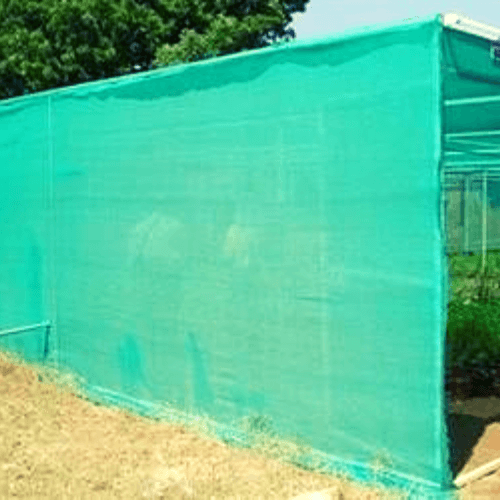
Insect nets typically come in different mesh sizes, with smaller mesh sizes being used to protect against smaller pests. And larger mesh sizes being used to protect against larger pests. The appropriate mesh size will depend on the crop and the specific pests that are present in the area.
Insect nets are typically made from UV-stabilized polyethylene or polypropylene. This makes them durable and resistant to UV light, wind and rain. They come in different sizes and can be used for various crops such as fruits, vegetables, flowers, and field crops.
The use of insect nets can have several benefits for crops, such as:
- Reducing the need for chemical pesticides, which can save farmers money and protect the environment.
- Improving crop yields and quality by reducing damage from pests
- Protecting the crop from diseases that pests can spread
- Reducing the risk of insect-borne diseases
Bird nets
Bird nets are a type of agricultural net that are used to protect crops from birds such as starlings, sparrows, and weaver birds, which can cause significant damage to the crop and reduce yields. They can also be used to protect crops from other birds that are known to cause damage.
Bird nets typically come in different mesh sizes, with smaller mesh sizes being used to protect against smaller birds and larger mesh sizes being used to protect against larger birds. The appropriate mesh size will depend on the crop and the specific birds that are present in the area.
Bird nets are typically made from UV-stabilized polyethylene or polypropylene, which makes them durable and resistant to UV light, wind and rain. They come in different sizes and can be used for various crops such as fruits, vegetables, flowers, and field crops.
The use of bird nets can have several benefits for crops, such as:
- Reducing the damage caused by birds, which can improve crop yields and quality.
- Saving farmers’ money by reducing the need for other bird control methods such as bird scarers or traps.
- Reducing the risk of bird-borne diseases.
What are the importance of agricultural nets?
Agricultural nets are an important tool for protecting crops from various environmental factors and pests, and can have several benefits for farmers, including:
- Increasing crop yields and quality: Agricultural nets can help to protect crops from damage caused by environmental factors such as excessive sunlight, strong winds, and heavy rain, as well as from pests, which can improve crop yields and quality.
- Reducing the need for pesticides: Agricultural nets can help to protect crops from pests, which can reduce the need for chemical pesticides, saving farmers money and protecting the environment.
- Improving water management: Agricultural nets can help to reduce water loss from the soil by reducing evapotranspiration, which can improve water management and increase the efficiency of irrigation.
- Improving crop diversity: Agricultural nets can enable farmers to grow a wider variety of crops, by providing the necessary environmental conditions for sensitive crops.
- Improving farmers’ livelihoods: Agricultural nets can help to improve farmers’ livelihoods by increasing crop yields, improving crop quality and reducing the need for chemical pesticides.
- Reducing the risk of diseases: Agricultural nets can help to protect crops from diseases that pests can spread and also from bird-borne diseases.
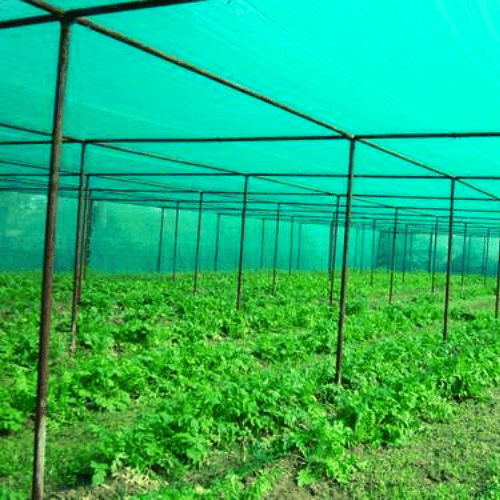
It’s worth noting that agricultural nets can also have negative impacts if not installed properly or if the wrong type of net is chosen, such as reducing the light level too much and causing the crop to be stunted, or causing the crop to be too wet and promoting disease development. To mitigate these negative impacts, it’s recommended to consult with an expert before installing the agricultural nets, and to monitor the crop growth and environmental conditions regularly.
What are the factors to consider when selecting agricultural nets?
When selecting agricultural nets, some factors to consider include:
- Type of crop: Different crops have different requirements for light, temperature, and protection from pests, so the agricultural net should be chosen accordingly.
- Environmental conditions: The climate and weather patterns of the area should be considered when choosing agricultural nets, as nets designed for one area may not be suitable for another area with different environmental conditions.
- Pest and bird population: The specific pests and birds that are present in the area should also be taken into account when choosing agricultural nets, as different nets may be more effective against different types of pests and birds.
- Mesh size: The size of the mesh of the net should be chosen according to the size of the pests and birds that need to be kept away from the crop.
- Durability: The agricultural net should be made from a durable material that can withstand the environmental conditions and last for a long time.
- UV stabilization: the agricultural net should be UV stabilized to protect it from degradation and ensure it lasts longer.
- Cost: The cost of the agricultural net and its maintenance should also be considered.
It may be helpful to consult with Aqua Hub Kenya for specific recommendations for your situation. It’s important to also ensure that the agricultural nets are installed properly and that they are regularly maintained to ensure they continue to provide the necessary protection for the crops.

